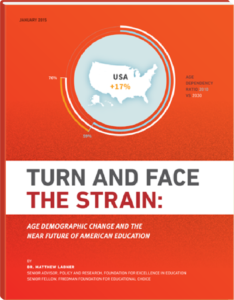
Back in 2015, I authored a study sounding the alarm regarding America’s changing age demography and how it would soon challenge K-12 education called Turn and Face the Strain. The basic case was that states face a gigantic increase in their elderly populations and a substantial projected increase in their K-12 populations, and the patron of state governments, the federal government, had huge unfunded liabilities. Eight years later, things are different than anticipated, and entirely worse.
If you want to start with the “good news,” which is actually bad, the country had a Baby Bust not reflected in the Census Bureau population estimates available in 2015. In the short term, smaller youth populations will relieve state financial burdens, but in the medium to long term, today’s youth population represents tomorrow’s working-age taxpayers. Limited youth translates into a limited future.
Now for the bad news: our federal government has exceeded previous records for fiscal irresponsibility. The federal government has been spending more than it takes in for decades, borrowing to make up the shortfall. During most of these recent decades, members of America’s massive Baby Boom generation were in their prime earning years, paying lots of taxes and saving for their retirement. Not coincidental to the rather alarming trend seen in the chart above, the average Baby Boomer reached the age of 65 in 2022. Right on cue:
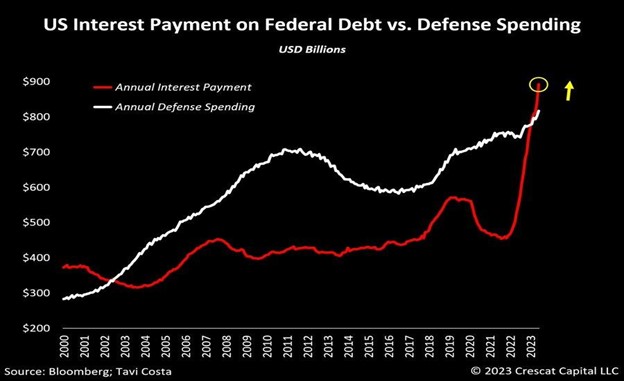
To be sure, there is more to the above trend than Baby Boomer retirement, including increased long-term interest rates and federal spending that would make inebriated sailors blush.
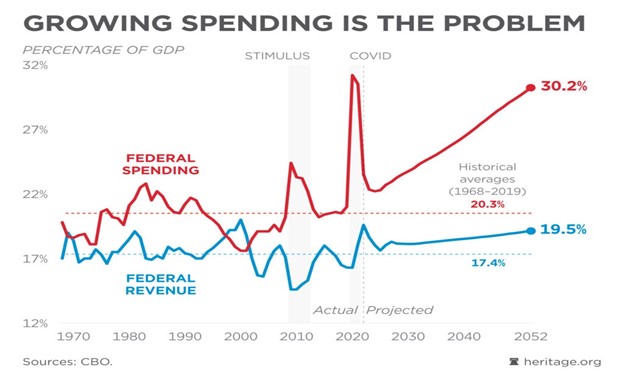
Meanwhile the march of Baby Boomer retirement continues unabated, with all surviving Boomers reaching the age of 65 by 2030. The federal government must roll over debt on an ongoing basis, and those super-low long-term interest rates are gone.
State and local governments primarily fund K-12, but this does not mean these larger trends will not affect them. State governments, for example, received 38% of their revenue from the federal government in fiscal year 2022, and the states are also in the health care financing business through the Medicaid program. Elderly people are heavy consumers of such health care, and every state is getting more and more elderly residents.
States face a short-run “fiscal cliff” with the expiration of COVID-19 relief money, but this is a minor concern in the grand scheme of things. Public schools never seemed to find much in the way of productive use for the funding in any case. The larger dynamic, however, is concerning. If the public school system presided over historic declines in achievement when possessed with more money than they ever expected, what will happen to academic achievement as the funding trend reverses? Is K-12 education doomed? I think not.
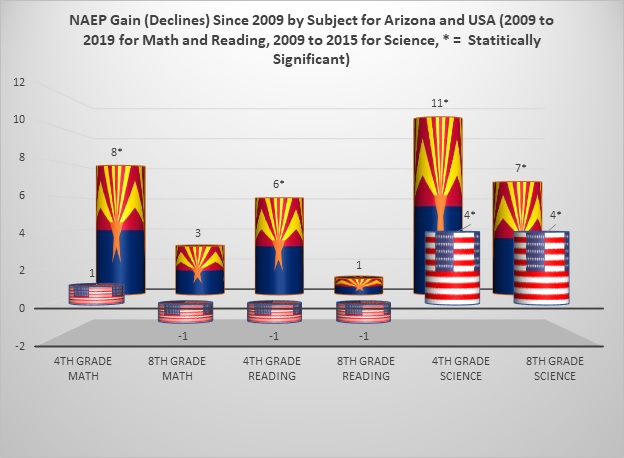
Arizona’s economy was drop-kicked with a steel-tipped boot during the Great Recession and saw some of the largest K-12 funding cuts in the country. Arizona students, however, were the only state student body to make statistically significant academic gains on all six NAEP exams given between 2009 and 2015.
During this period, Arizona lawmakers expanded scholarship tax credits and created the first education savings account (ESA) program. Charter school operators able to access capital during financial chaos found a once-in-a-lifetime (hopefully) opportunity to acquire campus space. This, in turn, created powerful incentives for districts to participate in open enrollment. Many high-demand schools replicated and expanded; low-demand schools saw their enrollments decline. It appears that Arizona families chose wisely overall.
The chart below is from different sources of data (linked state test data) from a different source (Stanford Educational Opportunity Project). It shows academic growth for low-income students from 2008 to 2018 by county. It shows the only Arizona county lacking above-average student academic growth (small and rural Greenlee-number 11 on the chart) had **cough** no charter or private schools.
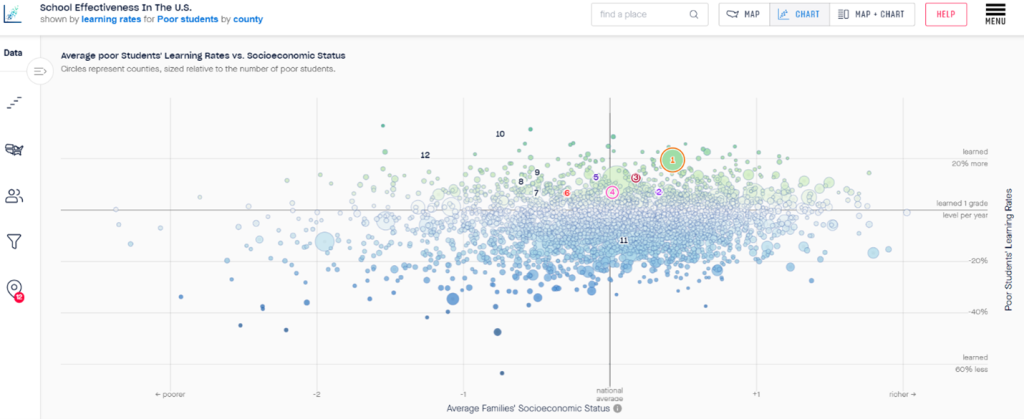
Can Arizona pull this off again? Only time will tell. High interest rates have slowed charter school construction, but microschools and ESAs have stepped into the breach. Is your state ready for the strain? Your time to prepare is running out quickly.


